Our Services
REVS is available for all routine care including:
Have something else you need? Contact Us and let us help you!
REVS is available for all routine care including:
Have something else you need? Contact Us and let us help you!
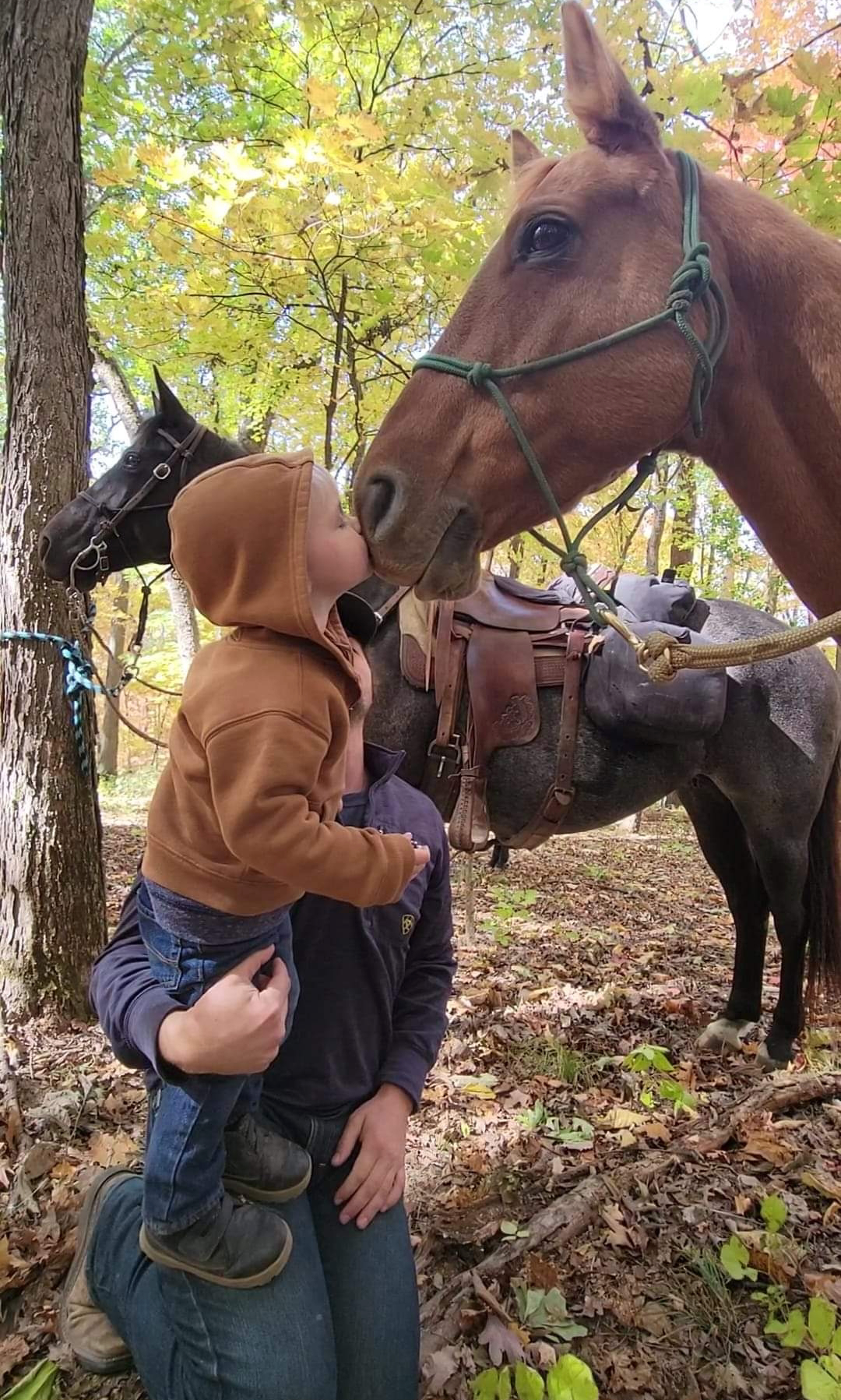
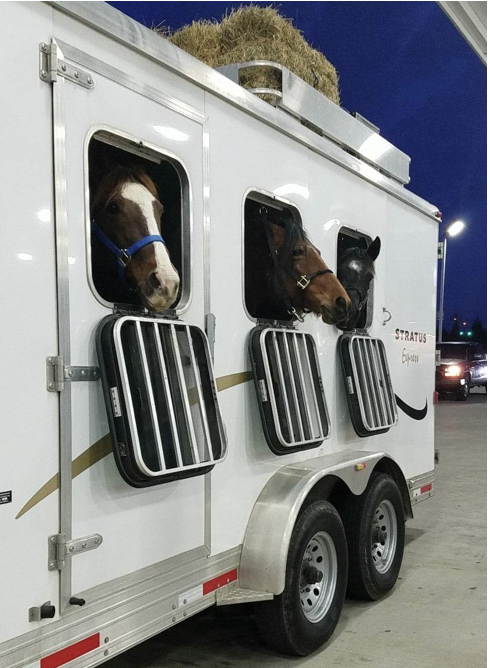 Certificate of Veterinarian Inspection (CVI) is a document that is required for interstate (between states) and some intrastate (within the state) travel. A CVI, also referred to as a health certificate, ensures your horse has been evaluated by a veterinarian recently and that, at the time of inspection, your horse had no obvious signs of illness.
Certificate of Veterinarian Inspection (CVI) is a document that is required for interstate (between states) and some intrastate (within the state) travel. A CVI, also referred to as a health certificate, ensures your horse has been evaluated by a veterinarian recently and that, at the time of inspection, your horse had no obvious signs of illness.
Certificate of Veterinarian Inspections are required to help reduce disease spread from one area and horse to another. An inspection for illness by your veterinarian may identify obvious or even subtle signs of disease that may not have otherwise been known. Some common diseases of concern include equine infectious anemia (EIA), strangles, equine herpesvirus- 1 and -4, vesicular stomatitis, and piroplasmosis. Certificate of Veterinarian Inspections are good for thirty days after issue date.
Certificates of Veterinarian Inspection may look slightly different from state to state; however, the following information is generally required on all CVI's:
Some states also require an entry permit number prior to approval of your CVI. For this reason, we recommend at least 1 week advance notices prior to your departure date to ensure we can complete your CVI requirements.
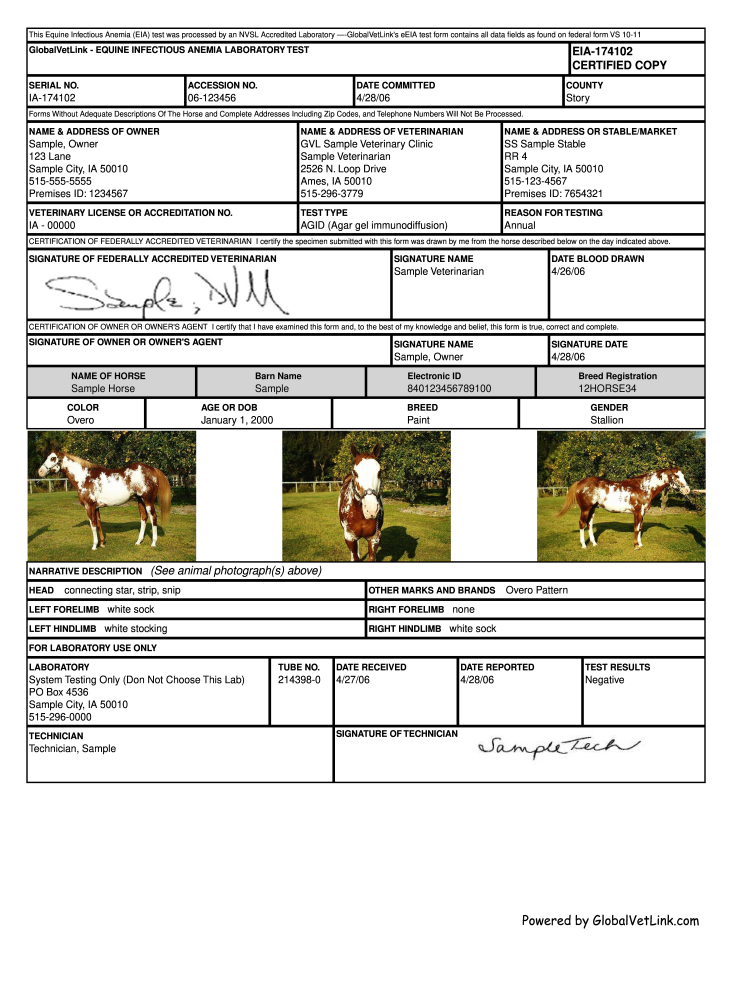 Coggins is a blood test for Equine Infectious Anemia. Equine Infectious Anemia is an acute or chronic viral disease of all equine species. The virus is related to the human AIDS Lentivirus, but is not known to infect humans. The predominate means of spread is the intermittent feeding of biting insects, especially horse flies and deer flies. EIA can also be spread through indiscriminate use of hypodermic needles, blood transfusions, and use of contaminated instruments or tack. No specific treatment or vaccine is currently available. Some horses will show no signs of EIA and can still transmit disease.
Coggins is a blood test for Equine Infectious Anemia. Equine Infectious Anemia is an acute or chronic viral disease of all equine species. The virus is related to the human AIDS Lentivirus, but is not known to infect humans. The predominate means of spread is the intermittent feeding of biting insects, especially horse flies and deer flies. EIA can also be spread through indiscriminate use of hypodermic needles, blood transfusions, and use of contaminated instruments or tack. No specific treatment or vaccine is currently available. Some horses will show no signs of EIA and can still transmit disease.
Coggins testing is required by the State of Missouri for any equine moving off premises. This includes equines involved in a change-of-ownership, when they are imported from another state, when they are publicly exhibited, boarded, trained, bred, and when they are sold through a livestock market.
Rural Equine Veterinary Services complies with all state and federal guidelines for handling and submission of samples for equine Coggins testing. In order to support the Department of Agriculture in animal disease traceability, REVS only offers Digital Coggins. This will include photographs of your equine taken when their blood sample is acquired. These photos will be uploaded onto their digital coggins form. Both digital and printed coggins reports will be available to owners after their testing results have been finalized.
 Diagnostic testing helps us to narrow down what might be causing your horse’s symptoms. As you can imagine, knowing more about your horse’s overall health from laboratory testing makes finding the correct treatment much easier. There are both routine and illness-based laboratory testing available for equines. Please contact us for more information on keeping your horses healthy!
Diagnostic testing helps us to narrow down what might be causing your horse’s symptoms. As you can imagine, knowing more about your horse’s overall health from laboratory testing makes finding the correct treatment much easier. There are both routine and illness-based laboratory testing available for equines. Please contact us for more information on keeping your horses healthy!
Endocrine Testing
Baseline Health Evaluation (Equine Wellness Profile)
Other diagnostic testing
Please inquire about additional diagnostic testing for both healthy and sick horses.
To read more on common equine diseases – follow these links!
https://aaep.org/issue/equine-cushings-disease-equine-pituitary-pars-intermedia-dysfunction
https://aaep.org/issue/equine-endocrinology-cushings-disease-and-metabolic-syndrome
https://aaep.org/horsehealth/equine-endocrine-diseases-basics
Vaccines are meant to create and maintain immunity against specific diseases. In other words, vaccines are meant to reduce an animal's risk of getting sick, and if they do get sick after vaccination, then the severity of the disease should be lessened and they may be less contagious. The vaccine is usually a modified, weaker version of the disease you are trying to prevent. When the vaccine is given to your horse, their body creates antibodies to fight this “mock disease", and these antibodies will stay in the body for a period of time after the vaccination. Now your horse is armed with a defense system ready to go if they do encounter the actual disease!
Vaccines are created for specific diseases for a few different reasons. A disease might have a high fatality rate, such as tetanus. Or a disease might be highly contagious and easily spread from horse to horse, such as influenza or strangles. Finally, a disease may have the possibility to spread across different species (these are called zoonotic diseases), such as West Nile Virus or rabies.
Equine vaccines are categorized by the American Association of Equine Practitioners (AAEP) as either core vaccines or risk-based vaccines. Core vaccines are vaccines that every single horse should receive, every year. Risk-based vaccines are vaccines that you may or may not administer to your horse, depending on a variety of factors (location, travel expectations, odds of exposure, etc).
Ask about our Vaccination Protocols and what is recommended for your horse!
For more information about Equine Vaccinations and associated diseases explore these links!
https://aaep.org/guidelines/vaccination-guidelines/risk-based-vaccination-guidelines/strangles
https://aaep.org/guidelines/vaccination-guidelines/core-vaccination-guidelines/rabies
https://aaep.org/guidelines/vaccination-guidelines
 Horse’s teeth begin to erupt in the first few days after birth, and they continue to grow throughout most of a horse’s life. Therefore, dental problems can occur at any age. A "baby" tooth might not shed properly, resulting in an impacted permanent tooth. A horse less than three years of age might have problems with the emergence of permanent teeth. An older horse might need attention because of lost or damaged teeth. The most common dental problems faced by a horse, however, are the result of the horse’s normal anatomy–the horse’s maxillae (upper jaw) is wider than the mandible (lower jaw). As the upper and lower teeth grind food, the surface of the tooth is worn away naturally. Each tooth slowly continues to grow to replace the portions that are ground away by normal wear. Problems occur when the edges of the teeth become sharp from not being worn off. These sharp edges, or uneven wear patterns, usually occur on the outside or cheek side of the upper teeth and inside or tongue side of the lower teeth because the upper jaw is wider than the lower.
Horse’s teeth begin to erupt in the first few days after birth, and they continue to grow throughout most of a horse’s life. Therefore, dental problems can occur at any age. A "baby" tooth might not shed properly, resulting in an impacted permanent tooth. A horse less than three years of age might have problems with the emergence of permanent teeth. An older horse might need attention because of lost or damaged teeth. The most common dental problems faced by a horse, however, are the result of the horse’s normal anatomy–the horse’s maxillae (upper jaw) is wider than the mandible (lower jaw). As the upper and lower teeth grind food, the surface of the tooth is worn away naturally. Each tooth slowly continues to grow to replace the portions that are ground away by normal wear. Problems occur when the edges of the teeth become sharp from not being worn off. These sharp edges, or uneven wear patterns, usually occur on the outside or cheek side of the upper teeth and inside or tongue side of the lower teeth because the upper jaw is wider than the lower.
“Floating” is the process of removing potentially harmful sharp points and edges from the cheek teeth. Before floating, a thorough examination of the mouth should first be performed under sedation. This can only be done properly by using a device called a speculum or 'gag' to safely keep the mouth open. This allows the practitioner to look and feel inside the horse's mouth to check not only for sharp points but also for other problems such as broken or missing teeth. Only once the mouth has been examined will the teeth be floated to ensure normal occlusion, chewing pattern, and to avoid bit issues.
Signs that your horse has dental problems:
More on Equine Dentistry Available from the following links:
Everything You Ever Wanted to Know About Equine Dentistry | AAEP
Trust Your Horse's Dental Care to an Equine Veterinarian | AAEP
Equine Dentistry | VCA Animal Hospital
 Stress, strain, or injury can take a toll on any horse, even one with no obvious conformation defects. When lameness occurs, you should contact your veterinarian promptly. A prompt examination can save you time, money and frustration by diagnosing and treating the problem immediately, possibly preventing further damage. The goal of such early examinations is to keep small problems from becoming big ones.
Stress, strain, or injury can take a toll on any horse, even one with no obvious conformation defects. When lameness occurs, you should contact your veterinarian promptly. A prompt examination can save you time, money and frustration by diagnosing and treating the problem immediately, possibly preventing further damage. The goal of such early examinations is to keep small problems from becoming big ones.
THE LAMENESS EXAM: Veterinarians have specific systems for performing lameness examinations, depending on the reasons for the evaluation. However, essential features of a thorough examination include:
To further determine the source and location of lameness, Diagnostic nerve and joint blocks can be performed. These analgesic techniques are perhaps the most important tools used to identify the location of lameness. Working systematically, the veterinarian temporarily deadens sensation to specific segments of the limb, one region at a time, until the lameness disappears. This procedure isolates the area of pain causing the lameness. Blocks can also help determine whether the condition is treatable.
If the source of lameness is determined to be originating from a joint or articular surface; intra-articular injections are an effective management option for both reducing pain and lameness as well as reducing progression of arthritis and joint disease. There are many different types of medications used for joint injections including but not limited to: corticosteroids, hyaluronic acid, biologics, etc.
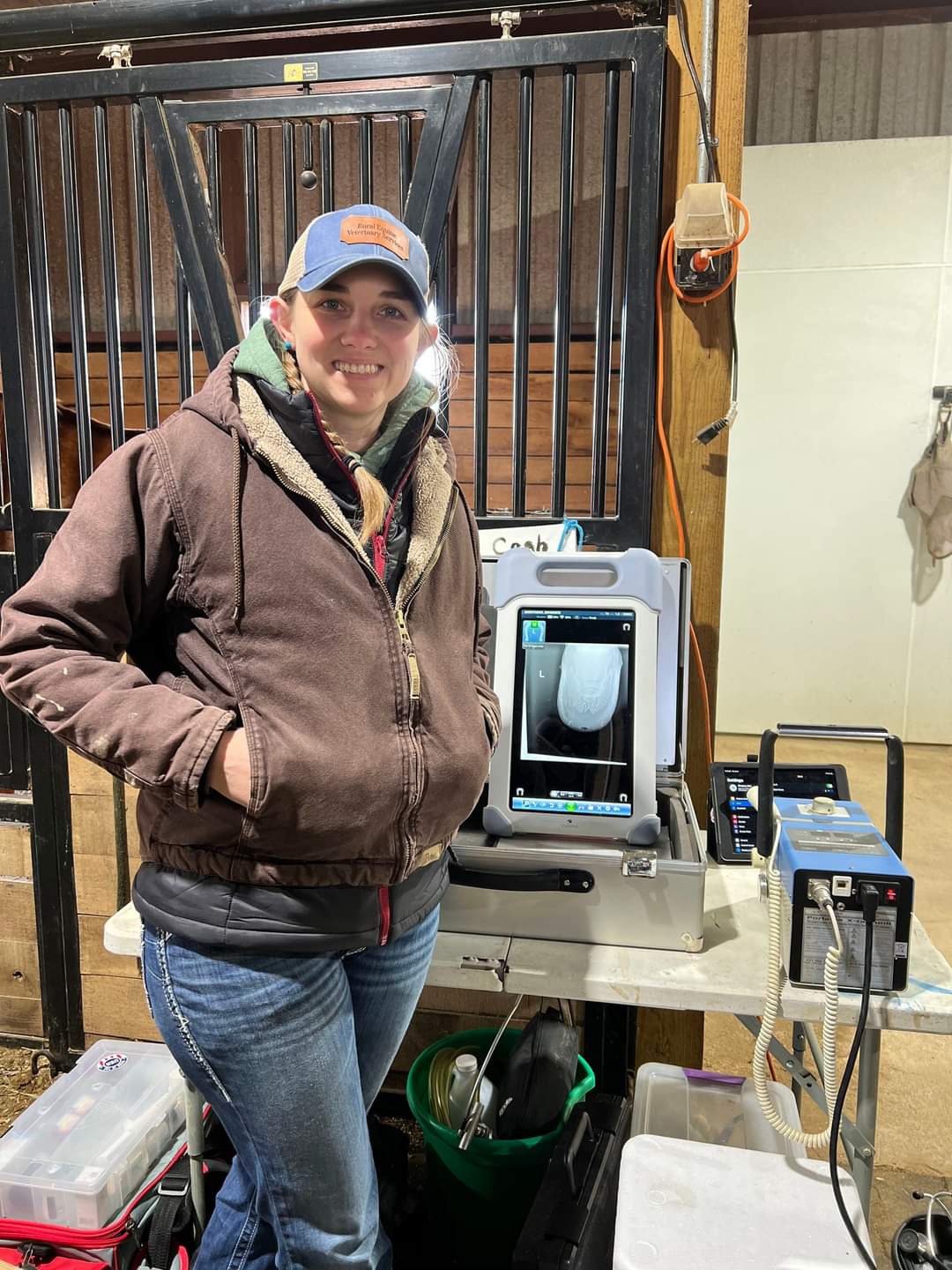 Radiography is a very common modality for evaluation of a wide range of lameness, dental, and other orthopedic conditions. The addition of high resolution, digital x-ray gives us the ability to best evaluate for even the most subtle changes. Radiography can be performed entirely on-site using a portable machine. Images are readily available as a digital copy for owners, farriers, and referral veterinarians.
Radiography is a very common modality for evaluation of a wide range of lameness, dental, and other orthopedic conditions. The addition of high resolution, digital x-ray gives us the ability to best evaluate for even the most subtle changes. Radiography can be performed entirely on-site using a portable machine. Images are readily available as a digital copy for owners, farriers, and referral veterinarians.
Operation of the x-ray machine will require an outlet near the horse for the machine to plug into, but otherwise we can complete the process in the most comfortable location for the horse. The horse may or may not need to be lightly sedated, depending on the location of the problem and the overall behavior of the horse during the procedure.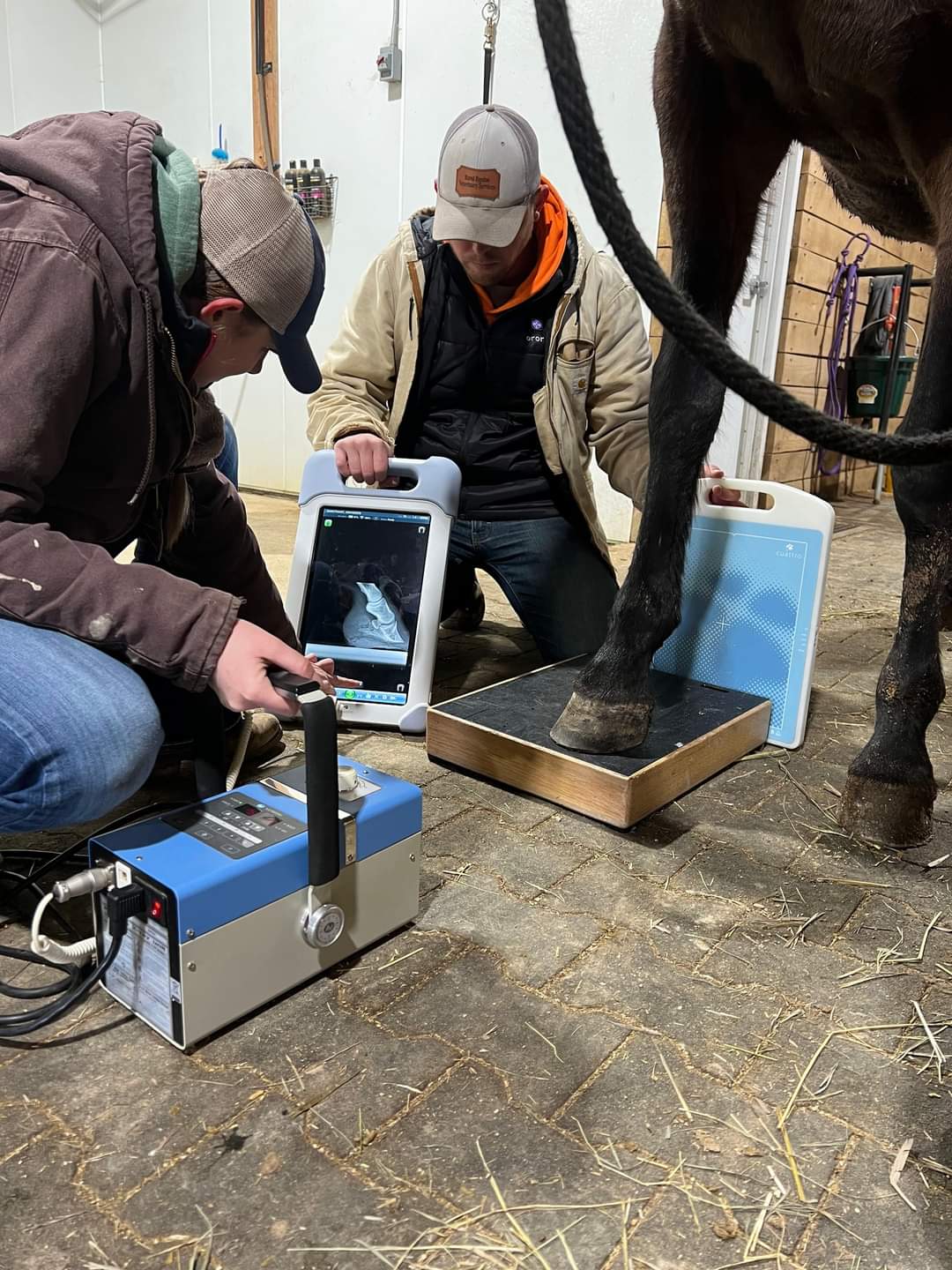
Please contact REVS with any questions regarding digital radiography!
https://thehorse.com/138866/in-depth-understanding-radiographs-x-rays/
https://thehorse.com/185111/a-guide-to-equine-diagnostic-imaging/